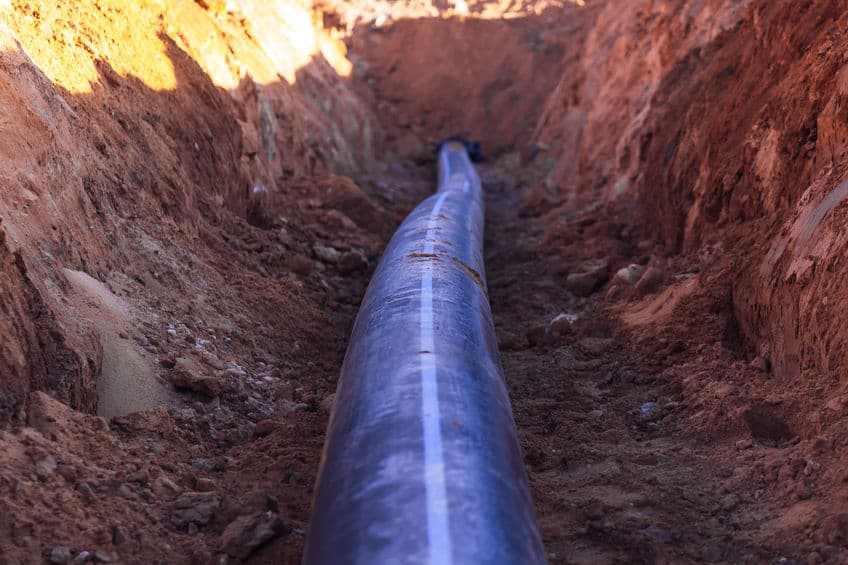
Locating buried water lines can be a challenge. Unlike other buried utility lines, which can typically be located using ground penetrating radar (GPR), water lines cannot always be easy to find with GPR. That’s because the majority of water lines are made of PEX or PVC, which are types of plastic, and plastic isn’t a conductive material. If you happen to have water lines composed of galvanized steel or copper, locating them wouldn’t be a problem with GPR, but very few properties have these types of pipes. GPR scanners struggle to find buried plastic lines—especially if they are buried deeply.
So, what are property owners to do if they want to excavate on their properties, but also don’t want to deal with broken water lines? The answer is to call in a private utility locating service that uses tools other than just GPR scanners to locate buried hazards. Unfortunately, some of the utility locating companies don’t want to use more than one tool or method, but prefer to just treat GPR as a one-size-fits-all tool—even though it’s not great at plastic water line locating.
According to the experts at Enhanced Scanning in Southern California, there are ways to find buried plastic pipes, but they’re not as simple as you might think. Enhanced Scanning explains: “If you’re a studious locator, you might say, ‘Well, if I can’t use GPR, what about a pipe locating wand?’ While there’s merit to your thinking, a pipe locating wand will only work if there is a tracer wire buried with the line – which is basically never. (But bless those few contractors out there who actually do take the time to bury one!)” Instead, the crew at Enhanced Scanning often uses acoustic locating for water line locating.
Enhanced Scanning says, “The acoustic locators that we use at Enhanced Scanning send an acoustic wave through the waterline. This increases the line’s pressure by approximately two psi, with a pulse wave generator (PWG) attached to a pressurized hose bib, hydrant, faucet, or other water sources on the line. Then, we use a digital processing unit, noise-canceling headphones, and a geophone to listen for the sound of the pulsing water underground.”
It’s a tedious process, to be sure, but one that is quite effective for plastic water line locating. Unfortunately, not all utility locating services are equipped with the right equipment or willing to put in the extra effort.
If you know (or even suspect) that you have plastic water lines buried in the area in which you want to excavate, make sure your utility locating service has a way to find them. If they tell you they will be using GPR to find them, push back! Ask them what other options they have if the GPR scan is inconclusive.









